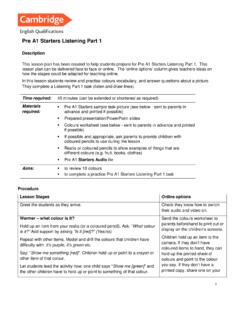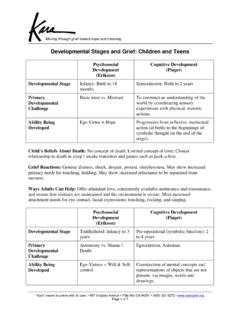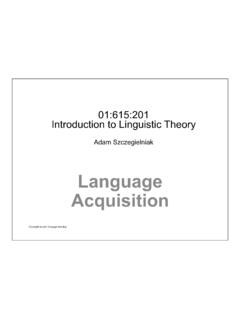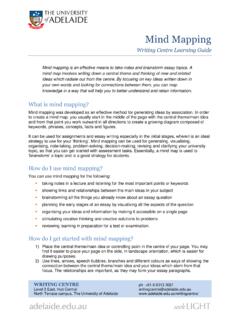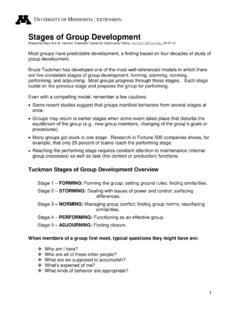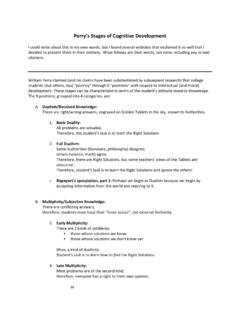Transcription of Mathematics guidance: key stages 1 and 2 (covers years 1 to 6)
1 Mathematics guidance : key stages 1 and 2 Non-statutory guidance for the national curriculum in England June 2020 2 Contents Acknowledgements 3 Summary 4 Introduction 5 ready -to- progress criteria: year 1 to year 6 9 Year 1 guidance 16 Year 2 guidance 48 Year 3 guidance 82 Year 4 guidance 143 Year 5 guidance 208 Year 6 guidance 278 Appendix: number facts fluency overview 332 3 Acknowledgements We would like to thank and acknowledge the following people involved in the production of this publication: Dr Debbie Morgan (Director for Primary Mathematics , NCETM); Clare Christie (Maths Consultant and Lead Practitioner, Ashley Down Primary School); Professor Anne Watson (Emeritus Professor in Mathematics Education, University of Oxford); Dr Yvette Sturdy (Development Editor, DiGiV8 Ltd.)
2 ; Jalita Jacobson (Editor and Illustrator); Steve Evans (Illustrator); Dr Xinfeng Huang, (Associate Professor, Shanghai Normal University); Elizabeth Lambert (Assistant Director for Primary, NCETM); Emma Patman (Assistant Director for Primary, NCETM); Carol Knights (Director for Secondary, NCETM); Kris Dong (Deputy Head of Primary, National Nord Anglia Chinese International School Shanghai); Ellie Swidryk (Mastery Specialist Teacher, Shrubland Street Primary School); Thomas Hassall (Mastery Specialist Teacher, St Andrew s Junior School); David Byron (Mastery Specialist Teacher, Cathedral Primary School, Bristol); Thomas Henesey (Mastery Specialist Teacher, Kingsholm C of E Primary School); Ione Haroun (Mastery Specialist Teacher, St White's Primary School); Farzana Khan (Mastery Specialist Teacher, Astwood Bank Primary School); Joanne Lane (Mastery Specialist Teacher, Stourport Primary Academy); Cat Potter (Head of Mathematics , Trinity Academy Bristol).
3 4 Summary This publication provides non-statutory guidance from the Department for Education. It has been produced to help teachers and schools make effective use of the National Curriculum to develop primary school pupils mastery of Mathematics . Who is this publication for? This guidance is for: local authorities school leaders, school staff and governing bodies in all maintained schools, academies and free schools 5 Introduction Aims of the publication This publication aims to: bring greater coherence to the national curriculum by exposing core concepts in the national curriculum and demonstrating progression from year 1 to year 6 summarise the most important knowledge and understanding within each year group and important connections between these mathematical topics What is included in the publication?
4 This publication identifies the most important conceptual knowledge and understanding that pupils need as they progress from year 1 to year 6. These important concepts are referred to as ready -to- progress criteria and provide a coherent, linked framework to support pupils mastery of the primary Mathematics curriculum. The ready -to- progress criteria for all year groups are provided at the end of the introduction ( ready -to- progress criteria), and each criterion is explained within the corresponding year-group chapter. Please note that the publication does not address the whole of the primary curriculum, but only the areas that have been identified as a priority. It is still a statutory requirement that the whole of the curriculum is taught.
5 However, by meeting the ready -to- progress criteria, pupils will be able to more easily access many of the elements of the curriculum that are not covered by this guidance . The year-group chapters Each chapter begins with a table that shows how each ready -to- progress criterion for that year group links to pupils prior knowledge and future applications. Each year-group chapter then provides: teaching guidance for each ready -to- progress criterion, including core mathematical representations, language structures and discussion of connections to other criteria e xample assessment questions for each ready -to- progress criterion guidance on the development of calculation and fluency Representations of the Mathematics A core set of representations have been selected to expose important mathematical structures and ideas, and make them accessible to pupils.
6 Consistent use of the same representations across year groups help to connect prior learning to new learning. The 6 example below demonstrates the use of tens frames and counters extended from year 1, where each counter represents 1 and a filled frame represents 10, to year 4 where each counter represents 100 a filled frame represents 1,000. Figure 1: using a tens frame and counters Figure 2: using a tens frame and counters Language structures The development and use of precise and accurate language in Mathematics is important, so the guidance includes Language focus features. These provide suggested sentence structures for pupils to use to capture, connect and apply important mathematical ideas. Once pupils have learnt to use a core sentence structure, they should be able to adapt and reason with it to apply their understanding in new contexts.
7 Language focus 8 plus 6 is equal to 14, so 8 hundreds plus 6 hundreds is equal to 14 hundreds. 14 hundreds is equal to 1,400. Making Connections Making connections features discuss important connections between ready -to- progress criteria within a year group. The example below describes how division with remainders is connected to multiplication and fractions criteria. Making connections Pupils must have automatic recall of multiplication facts and related division facts, and be able to recognise multiples (4NF 1 ) before they can solve division problems with remainders. For example, to calculate , pupils need to be able to identify the largest multiple of 7 that is less than 55 (in this case 49). They must then recall how many sevens there are in 49, and calculate the remainder.
8 Converting improper fractions to mixed numbers (4F 2 ) relies on solving division problems with remainders. For example, converting to a mixed number depends on the calculation . 7 Assessment Example assessment questions are provided for each ready to progress criterion. These questions demonstrate the depth and breadth of understanding that pupils need to be ready to progress to the next year group. Calculation and fluency Each chapter ends with a section on the development of calculation methods and fluency. Pupils should be able to choose and use efficient calculation methods for addition, subtraction, multiplication and division. They must also have automatic recall of a core set of multiplicative and additive facts to enable them to focus on learning new concepts.
9 Appendix: number facts fluency overview sets out when the multiplication tables and core additive facts should be taught, and in what order. How to use this publication This publication can support long-term, medium-term and short-term planning, and assessment. At the long-term planning stage , this guidance can be used to ensure that the most important elements that underpin the curriculum are covered at the right time, and to ensure that there is continuity and consistency for pupils as they progress from one year group to the next. At the medium-term planning stage , teachers can use the guidance to inform decisions on how much teaching time to set aside for the different parts of the curriculum. Teaching time can be weighted towards the ready -to- progress criteria.
10 The ready -to- progress tables at the start of each year group and the Making connections features support medium-term planning by demonstrating how to make connections between mathematical ideas and develop understanding based on logical progression. At the short-term planning stage , the guidance can be used to inform teaching strategy, and the representations and Language focus features can be used to make concepts more accessible to pupils. The publication can also be used to support transition conversations between teachers of adjacent year groups, so that class teachers understand what pupils have been taught in the previous year group, how they have been taught it, and how effectively pupils have understood and remembered it.










